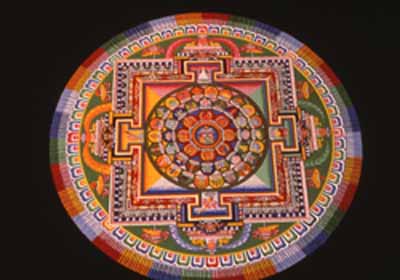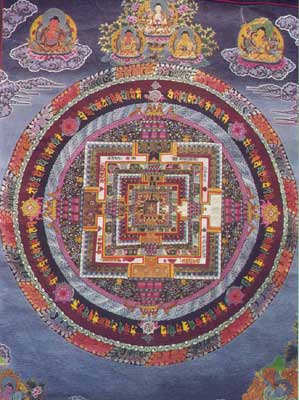
Wiregrass Ranch High School
Interdisciplinary Perspectives of the Himalayan Region
|
Mandalas Mandalas are a symbolic pictorial representation of the universe. Mandala originated in India, however it is also used in Tibetan Buddhism. Mandelas are constructed on consegrated grounds for rituals and are temporary structures built of impermanent materials such as grains,sand, watercolors or butter. Mandalas are deliberately destroyed afterward and are swept up upon completion of the initiation or ritual and poured into a nearby stream or river.
In this activity student will create their own mandala after viewing the Epheral Arts of Tibet slide show and lecture. They may use the attached Mandala outline or create their own. They should take into consideration the meaning of the color used in their Mandala.
* see Fincher, Susanne F. Coloring Mandalas for Insight, Healing, Self-Expression ( Boston : Shambala Publications, 2000) p. 17.
|
This site was created by Lorena Ortiz at the NEH Summer Institute "Cultures and Religions of the Himalayan Region," held at the College of the Holy Cross, Summer 2006





